Table of Contents
Key Technological Drivers of Cloud Monitoring
Modern cloud monitoring is evolving rapidly, powered by several key technological innovations. These drivers are shaping how observability is implemented and expanding its capabilities beyond traditional monitoring. Below are some of the most impactful trends and technologies driving cloud observability forward:
1. AI-Driven Observability (AIOps)
Advanced AI and machine learning are transforming cloud monitoring from reactive alerting to proactive insight. AIOps observability platforms leverage algorithms to automatically detect anomalies, forecast trends, and even remediate issues without human intervention. Instead of merely raising alarms after something breaks, AI-driven systems can recognize patterns in metrics and logs to predict failures (e.g. identifying a memory leak or scaling bottleneck hours before it impacts users). For example, Amazon’s AI-powered CloudWatch anomaly detection can flag unusual behavior across millions of events in real time. Industry surveys show rapid uptake of these capabilities – 42% of organizations have deployed AI/ML-powered monitoring or AIOps features, and those adopters report higher value from their observability investments.
AI-driven prediction is becoming essential to cope with the volume and velocity of cloud telemetry. It enables a shift from manual troubleshooting to autonomous operations, where the system not only tells you what’s wrong, but can trigger auto-remediation workflows (such as restarting a service or rolling back a bad deployment).
Another emerging aspect is the use of Large Language Models (LLMs) and natural language interfaces for observability. Engineers can increasingly ask questions of their monitoring systems (e.g. “why is response time high in region A?”) and get insights via natural language queries instead of writing complex queries. Essentially, AI transforms monitoring from a reactive alert system to a proactive insight engine, significantly reducing alert fatigue and freeing DevOps teams to focus on complex reliability engineering tasks. This AIOps revolution is tightly integrated with DevOps: as cloud environments scale beyond human manageability, AI becomes a co-pilot for SREs to maintain reliability at scale.
2. Distributed Tracing and OpenTelemetry
In cloud-native architectures, a single user request may traverse dozens of microservices, serverless functions, and databases. Distributed tracing has emerged as a crucial technique to follow these complex request paths end-to-end. Traces link the logs and performance metrics from each service call into a timeline, making it possible to pinpoint which microservice or API call caused a slowdown or error.
Recent surveys indicate that a majority of organizations have now adopted distributed tracing to troubleshoot microservices. The rise of OpenTelemetry (OTEL) has been a game-changer here – OpenTelemetry has become the de facto standard for instrumenting cloud applications.
Backed by CNCF and every major cloud provider, OTEL provides a unified API and protocol for emitting traces, metrics, and logs. This common standard means developers can instrument code once and send telemetry to any backend (Datadog, Grafana, Splunk, etc.) without vendor-specific agents. As of 2024, 85% of organizations report using OpenTelemetry or Prometheus in their observability stack, underscoring the momentum of open standards. The benefit is not only ease of integration, but also the ability to correlate data across heterogeneous systems.
Modern cloud monitoring software often comes with out-of-the-box support for OTEL, allowing instant visibility into popular platforms like Kubernetes, Envoy, or Cassandra with minimal configuration. Additionally, distributed tracing has unlocked service dependency analysis and granular performance tuning – teams can visualize service maps and identify which microservice call (or even which database query) is the latency culprit.
Looking ahead, OpenTelemetry’s evolution (it added standard profiling instrumentation in 2024) is pushing observability beyond the traditional “three pillars” (logs, metrics, traces) into profiles, events, and more.
This means richer data and context to analyze cloud systems. In short, tracing and OTEL are key drivers enabling deep observability in distributed, cloud-native systems, giving engineers the kind of insight into cross-service transactions that traditional monitoring could never provide.
3. Integration with DevOps and SRE Workflows
As DevOps and SRE (Site Reliability Engineering) practices mature, cloud monitoring is being woven directly into the software delivery and operations lifecycle. Observability is no longer an afterthought – it is built into CI/CD pipelines, release processes, and reliability planning from the start. DevOps monitoring platforms now integrate with version control and deployment tools to provide instant feedback on new code releases (for example, triggering alerts if a deployment causes a spike in error rates).
This tight integration supports SRE best practices such as defining Service Level Objectives (SLOs) and error budgets: monitoring software tracks these SLOs in real time and can automatically roll back a release or page an on-call engineer if an error budget is exhausted.
Google’s Site Reliability Engineering principles emphasize monitoring four key metrics, known as the ‘golden signals’: latency (response time), traffic (request volume), errors (failure rate), and saturation (resource utilization). To effectively track these, many teams integrate Service Level Objective (SLO) monitoring dashboards and automated alerts directly into their infrastructure-as-code. This approach ensures that every code deployment includes built-in observability, treating reliability metrics with the same importance as new feature development.
To truly integrate monitoring into the development lifecycle, teams are leveraging Continuous Integration (CI) pipelines to run automated smoke and performance tests. The results of these tests are then fed directly into monitoring systems before a full rollout, providing immediate feedback on potential issues. This approach fosters close collaboration between development and operations, often through shared observability tools that allow engineers and SREs to work from a unified view. For instance, during a major product launch, SREs can use a single dashboard to track both business and system metrics in real time. Additionally, monitoring data is being integrated into communication platforms like Slack or Teams via chatops integrations, enabling automated alerts and providing quick answers to system health inquiries. This level of collaboration is blurring the lines between traditional DevOps and AIOps.
Beyond real-time monitoring, observability plays a crucial role in continuous improvement. Post-incident ‘blameless retrospectives,’ where teams focus on understanding what went wrong without assigning blame, rely heavily on detailed observability data to pinpoint root causes and identify preventative measures. By making these insights readily available, cloud monitoring fosters a culture of learning and resilience, ensuring that each incident contributes to a more robust and reliable system.
In essence, observability has become an enabler for agile and reliable software delivery – SREs use monitoring and automation to validate releases against SLOs and rapidly rollback when needed, ensuring that velocity doesn’t come at the expense of stability. The best-in-class organizations treat observability as code, managing dashboards and alerts via Git and incorporating feedback mechanisms at every stage of the DevOps cycle. This deep integration means cloud monitoring software is not a standalone IT tool anymore, but a core component of how modern engineering teams plan, build, and run software.
Challenges and Complexity
Despite its critical importance, cloud monitoring in practice comes with significant challenges. Cloud-native and multi-cloud environments are inherently complex, and organizations must contend with an overwhelming flood of telemetry, high costs, and potential blind spots. Below, we outline the key challenges and complexities teams face:
Tool sprawl in observability – a 2024 survey highlighted that teams use a multitude of monitoring tools, and that multi-cloud complexity is straining traditional approaches. 62 different observability tools were in use across respondents, 70% of teams used four or more tools, and over 85% of tech leaders said multi-cloud complexity increased challenges in security and user experience.
Data Noise and Volume Explosion
One of the foremost challenges is the sheer data deluge produced by modern cloud systems. Cloud-native architectures (microservices, containers, serverless) generate far more telemetry data than traditional monolithic systems – estimates suggest 10× to 100× more monitoring data is emitted in cloud-native environments compared to VM-based setups. Every service, container, and function call produces logs and metrics, resulting in billions of data points per day in large deployments. In fact, an Edge Delta report noted that 38% of companies generate 500 GB to 1 TB of observability data daily, and 15% exceed 10 TB per day.
This firehose of data makes it extremely difficult to separate signal from noise. Human operators cannot realistically sift through dashboards with thousands of time-series or gigabytes of logs – underscored by the finding that 86% of tech leaders feel their cloud-native tech stacks produce more data than humans can manage. The consequence is often alert fatigue and important signals getting lost in the noise. Moreover, organizations suspect much of the data they collect is low-value – one observability study found nearly 70% of collected observability data is unnecessary, adding little insight while inflating storage costs.
This “data noise” challenge forces teams to implement clever filtering, aggregation, and sampling strategies to reduce volume without missing critical information. Determining what data to keep (high-cardinality metrics? full request traces? debug logs?) versus what to drop or downsample is an ongoing struggle. Too much data can overwhelm not only people but also systems – monitoring backends can choke on ingesting such high volumes, leading to performance issues in the monitoring system itself.
Balancing granularity of data with practicality is thus a key complexity. Ultimately, handling the massive scale of cloud telemetry requires both robust tooling (horizontally scalable data pipelines, efficient storage) and intelligent data management policies to ensure that the monitoring system remains an aid, not a hindrance.
Rising Observability Costs
The explosive growth in telemetry data directly drives up costs. Storing high-resolution metrics and logs for long retention, and analyzing them in real-time, can become prohibitively expensive at cloud scale. Enterprises are now scrutinizing the total cost of observability as much as they do cloud compute costs. Over half of organizations cite unexpected monitoring bills and cost overruns as a top concern.
There is a good reason – monitoring vendors often charge by data volume or throughput, so an unbounded firehose of data can blow up the budget. Leaders report increased pressure to optimize monitoring spend in the coming year. This has led to efforts like reducing data retention periods, moving infrequently used logs to cheaper storage, and using open source tools to avoid hefty licensing fees.
Some organizations are adopting clever techniques to trim costs: for example, federating Prometheus servers to keep metrics local and only push aggregates up, or using tiered storage that shifts older data to cheaper object stores. Data sampling (only storing a subset of traces or lowering metric collection frequency) is another lever – though it must be done carefully to not lose critical visibility. Essentially, teams must strike a balance between comprehensive observability and cost-efficiency.
Another facet of cost is the operational overhead: having dozens of disjointed monitoring tools (as many companies do) can incur extra costs for maintenance and training. This is why consolidation (mentioned earlier) is appealing not just for usability but for cost savings.
The challenge is that as systems grow, cutting data or tools can feel like cutting safety nets – no one wants to miss the one log line that could explain an outage. To tackle this, enterprises are investing in smarter data analytics that can compress data without losing meaning, and in AIOps features that reduce the manual labor (and thus cost) of managing the monitoring ecosystem. The end goal is cost optimization without visibility compromises – a difficult tightrope to walk as environments continue to scale.
Security Telemetry and Compliance Gaps
Cloud monitoring doesn’t only serve performance and reliability needs – it increasingly overlaps with security monitoring. As businesses shift to the cloud, they need to collect telemetry for detecting intrusions, misconfigurations, and compliance violations. This convergence of observability and security (sometimes called “SecOps observability”) introduces new complexity. Security data – like VPC flow logs, audit trails, vulnerability scan results – must be ingested and correlated with operational data to get a full picture during an incident.
However, many observability tools were not originally designed for security analytics, leading to silos. In practice, teams often have separate SIEMs (Security Information and Event Management systems) apart from APM and metrics tools, making it hard to trace an issue that spans both domains (e.g. a performance degradation caused by a DDoS attack might be noticed in monitoring dashboards but understood only via security logs).
Modern attacks on cloud infrastructure often manifest as subtle performance or usage anomalies. Without integrating security telemetry, those signals might be missed. On top of that, multi-cloud and hybrid setups complicate security monitoring: each platform (AWS, Azure, GCP, on-prem) emits different log formats and event types. Aggregating and normalizing this data is a heavy lift.
Respondents in a Dynatrace study highlighted this pain: 84% of tech leaders said the complexity of their cloud setups makes it difficult to protect applications from vulnerabilities and cyberattacks. Essentially, the more complex the system, the larger the attack surface and the harder to monitor comprehensively. Ensuring security telemetry is captured without overwhelming the monitoring system is also tricky – security logs can be extremely high volume (think AWS CloudTrail events) and are sensitive in nature. There’s also a skills challenge: ops teams may not be trained in interpreting security signals, and security teams may not fully trust observability tools for their needs.
This cultural gap can lead to blind spots if not addressed. In summary, integrating security considerations into cloud monitoring is a double challenge: technically unifying disparate data streams, and organizationally bridging traditionally separate teams. Both are necessary to achieve a holistic view of system health that includes both performance and security posture.
Multi-Cloud Visibility Blind Spots
With the majority of enterprises now employing multi-cloud or hybrid cloud strategies, obtaining a single unified view of systems across all environments is a major challenge. Each cloud provider offers its own native monitoring (AWS CloudWatch, Azure Monitor, GCP Operations, etc.), and on-premises systems might use traditional tools – these disparate sources make it hard to correlate issues that span clouds. Hybrid cloud visibility can suffer if, for example, your application’s front-end is in one cloud and the database in another: an outage in one might not be immediately apparent in the other’s monitoring dashboard.
Blind spots can occur when teams rely on siloed tools: perhaps AWS resources are well monitored by CloudWatch, but that won’t show an Azure Active Directory latency issue that is impacting login times. As systems sprawl across cloud boundaries, traceability becomes difficult – a transaction might start on-prem, hit a service in AWS, then fetch data from GCP. Following that path requires instrumentation that works across all environments, and centralizing that data.
OpenTelemetry helps by providing a common instrumentation layer, but organizations still need to aggregate and normalize telemetry across clouds. Another blind spot comes from edge computing (which by definition extends the cloud outwards) – many companies now run portions of their workloads on edge nodes or IoT devices that connect back to the cloud.
Monitoring those edge components (often with intermittent connectivity and limited resources) adds an extra wrinkle; without careful design, the edge can become a black hole for observability. Additionally, multi-cloud setups raise the challenge of inconsistent metrics and tags – each environment might label resources differently, making unified analysis hard.
To combat blind spots, some organizations are turning to vendor-agnostic observability platforms that ingest data from anywhere and present it in one console. Others are even building “observability mesh” architectures analogous to service meshes, to route and integrate telemetry globally. Still, the reality is that multi-cloud observability is hard. It requires not only the right tools but also broad integration and data engineering efforts. Until those mature, many teams will continue to struggle with partial visibility – a dangerous situation that can lead to extended outages if an issue goes undetected in one corner of the infrastructure. Reducing these blind spots is an ongoing battle as cloud footprints grow ever more distributed.
Future Outlook of Cloud Monitoring
Looking ahead, cloud monitoring is poised to undergo transformative changes by 2030. The coming years will see observability become more intelligent, automated, and encompassing emerging computing paradigms. Based on current trends, we can forecast several key developments in the future of observability and cloud monitoring:
Autonomous and Predictive Operations
By 2030, cloud monitoring is expected to fully transition from reactive alerting to predictive intelligence. The integration of AI (AIOps) will deepen, enabling monitoring systems to not only detect issues early but automatically prevent them. We will see automation handling the bulk of incident response – imagine self-healing infrastructure that can rollback deployments, restart services, or reprovision resources at the first sign of anomaly, all without human intervention.
Forecasts suggest that continued advancements in machine learning will allow monitoring platforms to accurately predict failures (e.g. “this Kubernetes node will likely crash in 30 minutes”) and proactively mitigate them. Predictive analytics will be bolstered by larger and richer datasets (thanks to ubiquitous instrumentation via OpenTelemetry and similar), as well as more powerful AI models. Natural language interfaces may become standard for ops tasks; for instance, an SRE in 2030 might simply ask an AI assistant “How can I improve our checkout service’s reliability?” and receive a data-driven answer.
The net effect will be a shift to autonomous cloud operations: fewer overnight on-call incidents and more continuous stability. Early signs of this future are here today – industry experts note a growing demand for observability systems that predict outages and performance degradation before they occur.
By the end of the decade, this proactive approach, with AI-driven predictive alerting as an industry standard, could reduce manual troubleshooting to a rare activity. Organizations that embrace these autonomous monitoring capabilities are expected to achieve near-zero downtime and unprecedented operational efficiency.
Observability for Serverless and Ephemeral Architectures
As cloud infrastructure moves toward more abstracted services (serverless functions, managed containers, and ephemeral resources that spin up on demand), monitoring techniques will adapt. The future of observability in serverless architecture will focus on capturing telemetry from short-lived executions that may last only milliseconds.
Traditional monitoring agents or daemons won’t suffice – instead, expect lightweight tracing embedded at the platform level (e.g. within the FaaS runtime) and event-driven logging that exports data upon function completion. The serverless computing market is booming ($24.5 billion in 2024 with 14% CAGR to 2030), meaning a larger share of applications will run on architectures where you can’t install a custom monitoring agent or tweak the OS.
Cloud providers will likely provide more built-in observability features for these (for example, AWS Lambda’s insights will get more granular). Tools will evolve to monitor workflow orchestration (since a single request may trigger dozens of function invocations and third-party API calls). Context propagation in these ephemeral environments is a big challenge that OpenTelemetry is actively addressing – by 2030 we expect standards for context to seamlessly flow through serverless, service mesh, and event-driven components.
Moreover, monitoring will expand beyond just runtime performance to include resource utilization and billing metrics, since in serverless architectures and frameworks, cost and performance are tightly intertwined. We may see observability platforms integrating with cost management to optimize function invocation patterns for both speed and cost (a form of “FinOps observability”).
In summary, as serverless and containerized deployments become prevalent, observability will become more event-centric and API-centric. Expect innovations in capturing transient state (e.g. snapshotting function memory on error) and more simulation-based monitoring (testing functions in sandbox environments) to ensure reliability of code that only runs on-demand. The key will be to provide developers and SREs the same level of insight into these black-box managed services as they have had in traditional systems – a challenge that will drive much innovation in telemetry in the years ahead.
Edge-Cloud Convergence and Global Observability
By 2030, the line between cloud and edge will blur as significant compute and data processing moves to the network edge. Gartner predicts that 75% of enterprise data will be processed at the edge by 2025 (up from just 10% in 2018), and this trend will only accelerate through 2030.
Edge computing – processing data closer to where it’s generated, such as on IoT devices, 5G base stations, or regional mini-datacenters – introduces new monitoring imperatives. Future observability platforms will need to handle highly decentralized infrastructure, where thousands of micro-sites and devices contribute telemetry. This means monitoring systems must operate hierarchically: some data will be processed and aggregated locally at the edge (to reduce bandwidth), with critical alerts and summaries sent to central cloud systems.
We can expect streaming analytics and federated monitoring to become standard – the ability to analyze data on the fly across distributed nodes. A challenge will be maintaining a unified view and correlation between edge and core cloud events. Edge-cloud convergence monitoring will involve tracking not just technical metrics but also location-based context (for instance, an application issue might be isolated to a particular region’s edge cluster). The network itself becomes a crucial part of observability, since edge devices rely on connectivity – monitoring latency and reliability of the links between edge and cloud will be vital (perhaps integrating with telco observability tools as 5G networks provide telemetry).
Security monitoring at the edge will also rise in importance, requiring integration of security events from devices with cloud SIEMs. The future likely holds specialized edge observability tools that can run in resource-constrained environments (e.g. a lightweight collector on a factory floor IoT gateway) and feed into cloud-based analytics. Vendors and open-source projects are already exploring this (projects in LF Edge and others).
By 2030, observability will span from the core to the furthest edge, ensuring that even as computing becomes geographically distributed, operators can maintain end-to-end insight. This will be critical for industries like autonomous vehicles, telemedicine, and smart cities, where real-time analytics at the edge must seamlessly integrate with cloud oversight. We also anticipate the growth of satellite observability (for space-based systems) and other frontier use cases, further extending what “cloud” monitoring encompasses.
Overall, monitoring will transform to handle a planet-scale computing fabric, requiring unprecedented scalability and intelligent filtering to truly watch over everything from edge sensors to cloud clusters as one system.
OpenTelemetry and Unified Standards Maturity
The late 2020s will likely see the fruition of efforts to standardize and unify telemetry. OpenTelemetry’s evolution is a cornerstone of this future. By 2030, OpenTelemetry is expected to be a fully mature standard widely adopted across enterprises and cloud providers, covering all types of telemetry (metrics, traces, logs, events, profiles). This will greatly reduce the friction of instrumenting applications – developers will code instrumentation once, and any monitoring backend can understand it.
The ecosystem around OTEL (collector agents, protocol, semantic conventions) will solidify, making it easier to plug new data sources or new analysis tools without custom adapters. In practice, this means deploying a new monitoring tool will not require redeploying agents everywhere; telemetry collection becomes decoupled from telemetry analysis.
For example, by 2030, if an organization wants to try a new AI analytics platform on their telemetry, they can simply ingest the existing OTEL data stream, rather than install yet another agent. This decoupling and interoperability will encourage a rich marketplace of specialized observability analytics, since data lock-in is less of an issue. Open standards will also likely extend into areas like synthetics (active monitoring) and user experience, ensuring those data types can correlate with core telemetry easily.
Another outcome of standardization is improved data sharing across teams – telemetry can be more easily shared between, say, an application team and a networking team, because common formats make it intelligible to multiple tools and contexts. We may also see regulatory or compliance standards around telemetry (similar to how accounting has standards) by the end of the decade, given how critical observability data is to operations. In short, the future points to a unified observability fabric where instrumentation is consistent and vendor-neutral. OpenTelemetry will likely be as ubiquitous and invisible as TCP/IP – a common layer that everyone uses. This will empower organizations to focus on higher-level insights and unified observability platforms rather than wrangling data compatibility. Combined with the consolidation trend, by 2030 many companies might operate with a single observability backend of choice that ingests all telemetry via OTEL, providing a seamless, correlated view of logs, metrics, traces, events and more. This standardization, along with advances in automation and AI, sets the stage for observability to become a foundational element of all digital systems – akin to an immune system that is built into the fabric of cloud infrastructure.

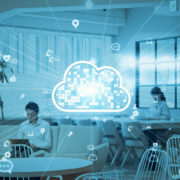
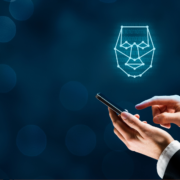
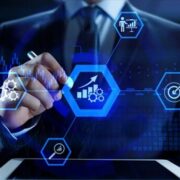
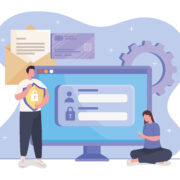

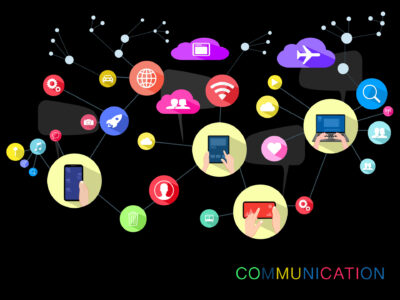

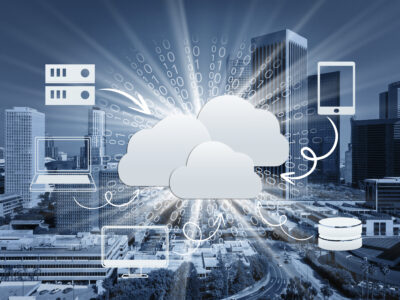
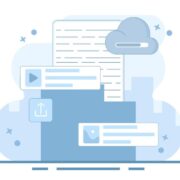
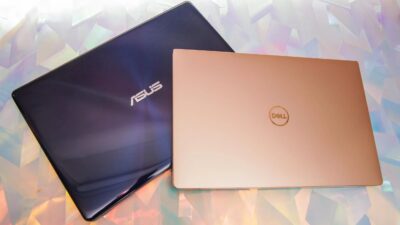

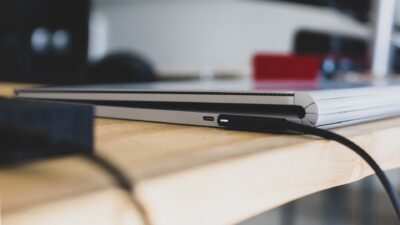


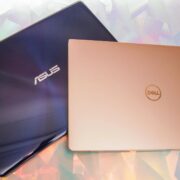



Comments